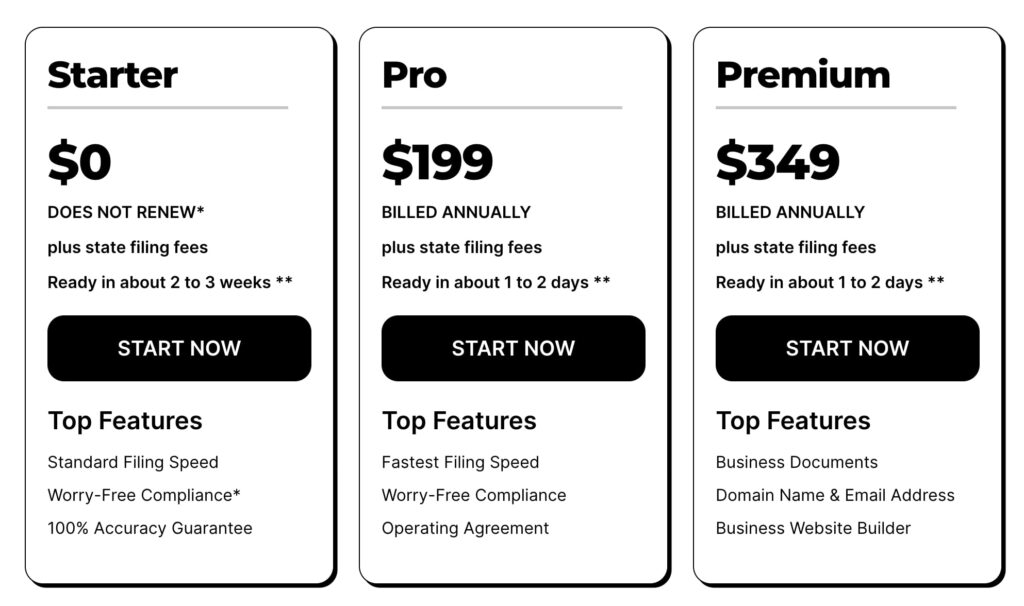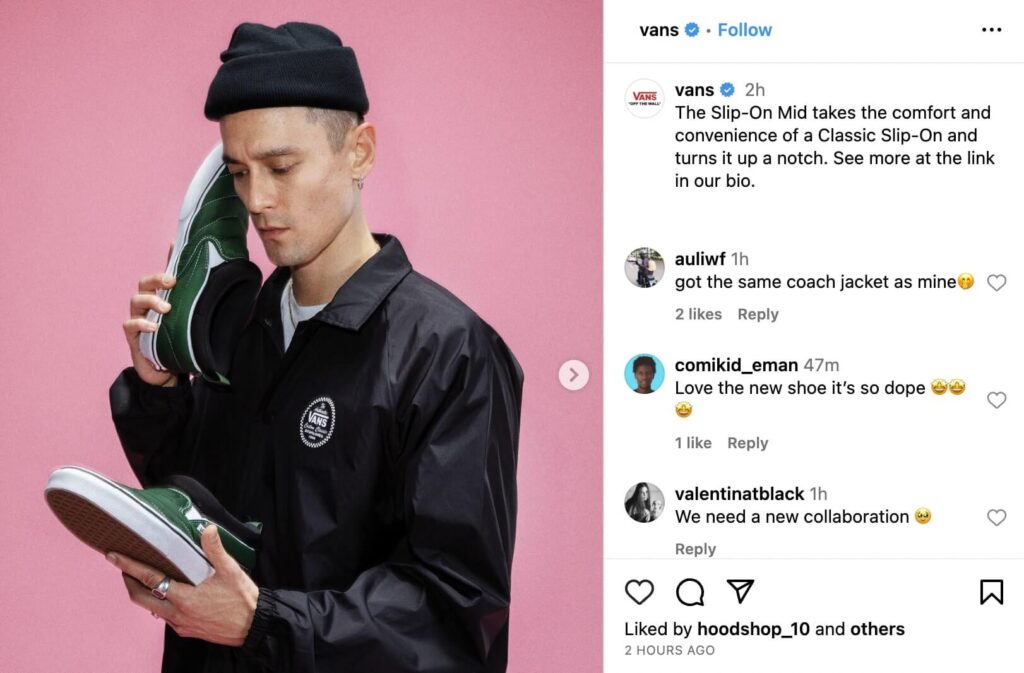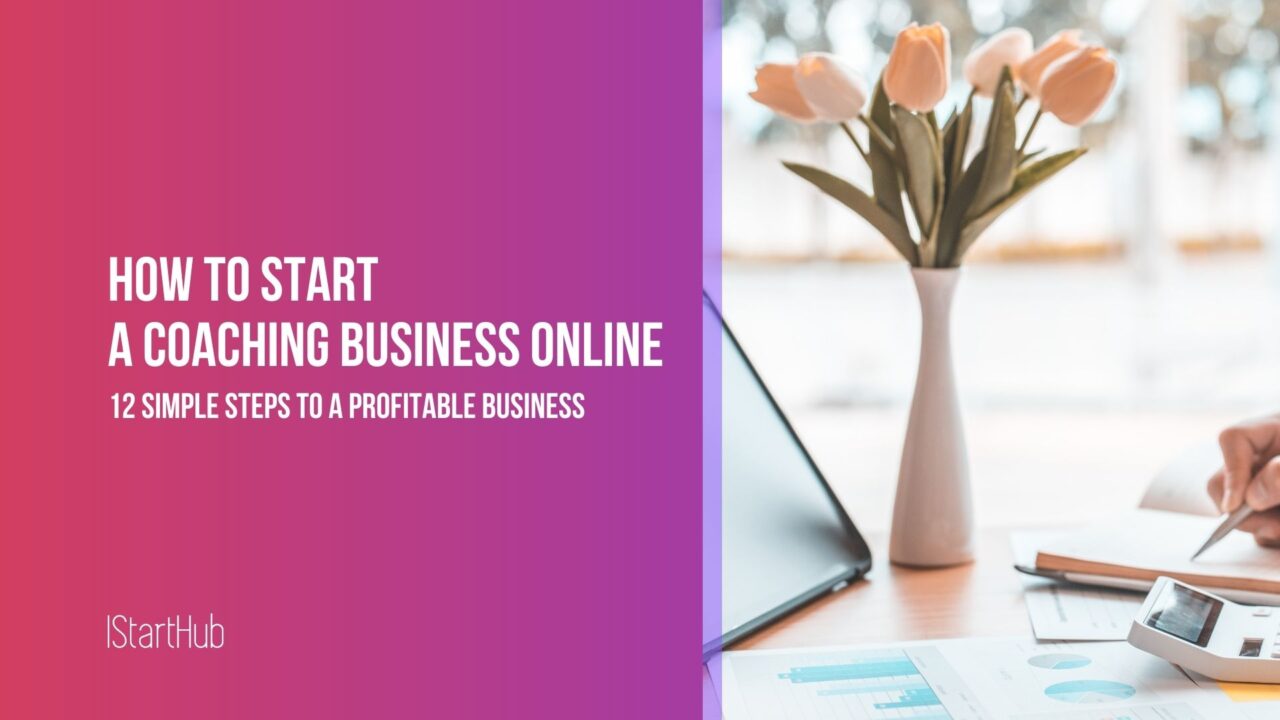Are you looking for a steady-growing industry with constant demand? Then the shoe business is an excellent choice. Whether you want to sell shoes for babies, brides, grooms, casual wear, or official footwear, a shoe business can be profitable.
With careful planning, execution, and marketing strategy, you can build a successful business empire selling globally. Moreover, the footwear business is versatile and can operate in a physical location or online.
I’ve prepared a step-by-step guide on how to start a shoe business to kickstart your journey toward financial freedom.
Footwear Market Size 2023
A report by Statista indicates that the revenue in the footwear market totals $445 billion in 2023, with the market expected to grow by a CAGR of 3.8 percent between 2023-2027. The growth in the footwear market size only proves how lucrative the shoe business is.
Another analysis by Zion Market Research shows that the global footwear market is expected to hit the $300 billion mark by the end of 2023. This makes the shoe industry worth tapping into.
However, to gain a competitive edge in this market, you’ll need to be creative and innovative in your business operations. More importantly, you’ll need to refine your marketing strategies to reach as many customers as possible.
A step-by-step guide to starting a shoe business online
Ready to learn how to start a shoe business? Here’s what you’ll need to do:
1. Define a business model
The first step (potentially, the most crucial one) when starting a shoe business is to choose the structure of your business. You can select one of three major models:
Shoe production
With this model, you should focus on creating your own shoe brand. That is, designing, customizing, and manufacturing the shoes from scratch. To excel in this entrepreneurial structure, you require the technical capacity, planning, and funding necessary. It can be a rather costly and time-consuming way of starting a business.
Read on: 7 BEST EQUIPMENT NEEDED TO START A CLOTHING LINE
However, the good news is that there are many companies that can do that for you!
Dropshipping
Dropshipping is the easiest and most convenient business model for selling shoes, especially with limited capital.
You don’t need to stock shoes or any other products. You’ll act as an intermediary between the manufacturer/supplier and the buyer. Your role will be to promote the products and your online store, take orders, and pass them to the manufacturer who packages and delivers them.
Wholesale
Reselling shoes is a common business model. It means you buy shoes in bulk from a manufacturer, store them at your warehouse, and sell them gradually. As you can see, this model requires a warehouse to store the consignment and constant investment in the purchase of shoes.
The business model you choose will be determined by factors like niche, the geography of sales, availability of warehouse, and the starting capital.
2. Register your shoe business
How to start a shoe business online and make it official? You need to register it! Registering your business entity is an important step when setting up a new business. So, if you plan to start a shoe business online, register your business name with the relevant authorities. In most cases, sole proprietorships don’t require you to obtain business registration.
However, limited company liability (LLCs), partnerships, and corporations must register with the applicable state and local agencies.
Try ZenBusiness, it is a reputable LLC registration service known for its simplicity and efficiency.
How to register your shoe business with ZenBusiness:
- Visit ZenBusiness Website
- Select Your Package: Choose the package that best suits your business needs and budget. ZenBusiness offers options like the Starter, Pro, and Premium packages.

- Provide Information: You’ll need to provide details about your shoe business, such as its name, address, and ownership structure.
- Customization: Depending on your package, you can customize your order with additional services like a registered agent or an EIN (Employer Identification Number).
- Review and Submit: Review your order to ensure accuracy, then submit it to ZenBusiness. They will take care of the paperwork and registration process on your behalf.
- Stay Informed: ZenBusiness will keep you informed about the progress of your registration. Once completed, you’ll receive the necessary documentation to officially operate your shoe business.
Keep in mind that each country or state has unique requirements. Therefore, consider seeking the advice of a business consultant to ensure you meet all the legal and tax requirements to operate the business.
3. Find suppliers
Depending on your business model, you have to find the right supplier for the type of shoes you want to sell. These suppliers must be able to meet the demand for your products, maintain consistency in quality, and offer discounts for bulk purchases.
The most challenging part will be to find a reliable supplier. For example, if you opt to dropship, you can select from a large pool of dropshipping companies, such as Alibaba, Oberlo, AliExpress, Worldwide Brands, Doba, and Spocket.
You may also have to choose between domestic and overseas suppliers, depending on your customers, the type of shoes, and shipping costs. In any case, having more than one supplier is better to ensure you always have a backup in case of supply chain issues.
4. Be Sustainable
When starting a shoe business, it’s important to consider not only the design and quality of your products but also the environmental impact of your packaging. Embracing eco-friendly and sustainable packaging practices can set your business apart and attract environmentally conscious customers. By opting for custom shoe boxes with a logo made from recycled materials, you can demonstrate your commitment to sustainability. Additionally, you can explore innovative packaging solutions such as compostable materials or minimalist designs that use fewer resources.
5. Open an online store
In this digital era, operating your business without an online store denies you many growth opportunities. The good news is that starting an online store isn’t as complicated as it used to be a few years ago.
Various platforms like Shopify, WooCommerce, and BigCommerce make the process way easier and faster. Here’s what the process of opening an online store looks like:
- Create a business name and brand. A platform like Shopify has a business name generator, logo maker, and attractive online store themes.
- Find your niche (more on this below).
- Set up your product page with eye-grabbing images and product descriptions.
- Choose your sales channels. If you’re an e-commerce platform like Shopify to create your site, understand and implement bookkeeping for Shopify to track and manage your financial transactions.
- Choose the most convenient and reliable payment and delivery methods for your customers.
- Implement e-commerce marketing strategies to promote your shoe store.
How to pick a shoe niche
The footwear industry is expansive, with a variety of products to sell. Choose the type of shoes you intend to specialize in. The initial research should help narrow down your niche.
For example, if your brand targets Gen Z, find out the type of shoes they love. This age group is young and diverse and wants to look trendy. Therefore, you should meet their demands. If the population is mixed, stock a wide range of styles to accommodate everyone.
Alternatively, you can focus on budget wear, if that’s what the market is missing.
Some of the footwear stock you may want to consider include:
- Sandals, slippers, flip-flops, and light summer wear – ideal if you are close to the beach.
- Protective and safe footwear – ideal if there are many factories or warehouses around.
- Children’s shoes and boots
- Sports Footwear
- Women’s Footwear
- Men’s Footwear
- Specialist footwear for certain medical conditions, dance shoes, or theatrical shoes.
In addition to stocking shoes, you’ll also likely need to sell accessories related to shoes or fashion, such as:
- Laces, insoles, and other shoe care products like polish.
- Socks, stockings, tights, odor preventers, and polishing sponges.
- Wallets, belts, handbags, and other leather products
- Sunglasses, costume jewelry, and hats
When identifying your niche, be sure to factor in seasonality. Season changes affect the demand and supply of certain types of footwear, and you’ll need to be ready to stock products as required.
How to determine your target audience
Identifying your niche will help you easily determine your target audience. So, if you’ve decided to sell to young people below 30, you’ll need to specify characteristics that distinguish them and their buying habits.
Things like age, average income, lifestyle, gender, shopping frequency, and tastes in clothes can help you further determine the type of products to stock in your shop. For your online store, you need to figure out where your customers spend most of their time.
For example, if you pick the trendy heels market, you’ll likely find professional women on Facebook, LinkedIn, and Instagram. If you choose sneakers and athletic wear, your primary target will be young teens, and you can find them on TikTok and Instagram.
How to price your products
- Your product manufacturer or supplier may recommend the retail prices for your products. This gives you a benchmark to set prices for the products. In cases where there are no guidelines from manufacturers on retail price, you must ensure you get it right.
- A simple method to determine the price is to add total costs to your markup percentage. To develop a product pricing strategy that works for you, you’ll need to research the market and your customers thoroughly.
- But here’s the thing. Pricing isn’t a set-and-forget thing. You’ll need to test different pricing strategies and go with the one that will help you build a profitable and sustainable business.
6. Find retail partners
Retail partnerships describe two businesses that collaborate to tap into each other’s customer base and resources. Retail partnerships give you more visibility and may boost sales.
However, not all retail partnerships are beneficial. This calls for careful research on retail partners to pick the right ones that will increase your market penetration and boost your business growth.
How to choose a retail partner for the shoe business:
- Consider the partner’s audience and demographics, and how they align with your ideal customer. In addition, consider how crowded your product category is in their catalog. You want a partnership where your brand stands out and has the potential to increase your reach.
- Consider the retail partner’s reputation. You want a partner with high-quality and trustworthy brands, as well as excellent customer experiences.
- Trust is essential. Some retailers are unscrupulous and may violate your minimum advertised price (MAP) or pricing policy, and this might hurt your brand.
7. Plan a shoe business marketing strategy
The key to starting an online shoe store is developing a strategic marketing plan that specifies your goals, and action plans, and measures business performance. Below are the key steps involved in marketing strategy for online shoe store.
SEO
Keyword Research: Identify relevant keywords such as “buy women’s sneakers” or “best men’s dress shoes.” Use tools like Google Keyword Planner.
On-Page SEO: Optimize product descriptions, meta titles, and meta descriptions with target keywords.
Content Marketing: Publish blog posts about shoe care, fashion trends, and style tips. Zappos is known for its informative content.
Pay-Per-Click Advertising
Google Ads: Create ad campaigns targeting specific shoe keywords. Nike effectively uses Google Ads.
Social Media Advertising: Run Facebook and Instagram ads with visually appealing shoe images. Adidas is known for its social media ads.
Retargeting Ads: Use retargeting ads to remind potential customers about the shoes they viewed on your website. Amazon employs retargeting effectively.
Social Media Marketing
Instagram: Footwear marketing strategy means focusing on social media. Share high-quality images of your shoe collections, using relevant hashtags. Tag influencers wearing your shoes. Vans has a strong Instagram presence.

image source: Instagram
Facebook: Post engaging content, run contests, and interact with followers. TOMS is known for its social impact campaigns on Facebook.
Influencer Marketing
Collaborate with Influencers: Partner with fashion influencers to showcase your shoes in real-life settings. Skechers collaborates with influencers.
User-Generated Content: Encourage customers to share photos of themselves wearing your shoes and use a dedicated hashtag.
Email Marketing
Segmentation: Segment your email list based on purchase history, preferences, or demographics. Send personalized product recommendations.
Abandoned Cart Emails: Send reminders to customers who left items in their carts. DSW does this effectively.
Customer Reviews and Ratings
Encourage Reviews: Ask satisfied customers to leave reviews on your website and other platforms like Yelp.
Transparency: Address negative reviews professionally and offer solutions. Nordstrom handles reviews well.
Loyalty Programs
Reward Points: Implement a loyalty program where customers earn points for every purchase. These points can be redeemed for discounts.
Exclusive Offers: Offer early access to sales or exclusive discounts for loyal customers.
Content Marketing
Video Marketing: Create shoe styling videos, “how to” videos, and behind-the-scenes content. Converse is known for its creative videos.
Blogging: Continue to publish relevant and engaging blog posts related to shoes and fashion.
Partnerships and Collaborations
Collaborate with Other Brands: Partner with complementary brands to co-promote products. For example, a shoe store could partner with a handbag brand.
Analytics and Testing
Data Analysis: Continuously analyze website and advertising performance. Adjust strategies based on data.
A/B Testing: Experiment with different ad creatives, website layouts, and email subject lines to optimize results.
Remember that a successful marketing strategy is an ongoing process that adapts to changes in customer behavior and industry trends. By implementing these strategies and learning from established shoe companies, you can build a strong online presence and attract loyal customers to your shoe store.
- Setting your marketing goals, which should be SMART (specific, measurable, achievable, relevant, time-bound)
- Performing industry analysis to provide an overview of the shoe industry, the market, and the trends affecting the shoe market. This will give you a broader understanding of what your competitors are doing, their marketing strategies, strengths, and weaknesses. Consider large footwear chains and specialist shops like sports shops, clothes shops, outdoor leisure shops, and supermarkets that also sell shoes. Check out the type of shoes they are selling and analyze their pricing strategy. This will help you identify gaps in the market and fill them.
- Performing customer analysis, where you detail customer segments, target audience, and what the customers want.
- Performing a competitive analysis to provide information about your direct and indirect competitors, addressing issues like the type of customers they serve, their pricing strategy, and the type of shoes they stock, etc.
8. Create a scale-up plan for a shoe business
Over time, with the successful implementation of your marketing strategies, your business will grow. You want to have the right scale-up plan when the timing is right. A platform like Shopify offers you scalable pricing plans to fit every entrepreneur at every stage of their business.
Remember, when you scale up, you’ll register higher sales volume, which means your supply chain should be able to handle that. Likewise, you’ll need to draw up a plan of how you’ll increase your team to manage order fulfillment. You don’t want delayed orders because you don’t have enough staff to handle the influx.
An effective way to get more things done at scale is to automate whatever processes you can. For example, you can use chatbots to handle dozens of queries from interested customers.
FAQs
Is starting a shoe business profitable?
The global footwear market size was estimated at $373.19 billion in 2021 and was projected to register a compound annual growth rate (CAGR) of 4.3 percent from 2022 to 2030.
So, yes. The shoe industry can be profitable, especially if you leverage all the marketing channels available, including social media and influencer marketing.
How to start a shoe business with no money?
Starting a shoe business with absolutely no money can be quite challenging, but it’s not impossible. Here are some creative ways to get your shoe business off the ground without a significant initial investment:
- Resale or Consignment
Begin by collecting secondhand shoes from friends, family, or thrift stores. You can clean, repair, and resell these shoes online or at local flea markets.
- Dropshipping
Partner with suppliers or manufacturers who offer dropshipping services. With drop shipping, you only purchase the shoes when you make a sale, eliminating the need for inventory.
- Online Marketplace
Start your shoe business on platforms like eBay, Etsy, or Poshmark, where you can list your shoes for sale without the cost of building a standalone website.
- Local Craft Fairs
If you have shoe design skills, create unique, handcrafted shoes and sell them at local craft fairs or markets. These events often have lower booth fees than traditional retail spaces.
- Barter or Trade
Trade your skills or services for shoes. If you have a valuable skill like web design or photography, offer your services to a shoe supplier or manufacturer in exchange for shoes to sell.
- Online Fundraising
Crowdfunding platforms like Kickstarter or Indiegogo can help you raise initial capital for your shoe business. Create a compelling campaign showcasing your shoe designs and business ideas.
- Shoe Repair Services
Offer shoe repair services to your local community. You can learn basic repair techniques online or through local workshops.
- Consignment Shops
Partner with local consignment shops to display and sell your shoes. They typically take a percentage of the sales, but it’s a way to reach a wider audience without a storefront.
- Bootstrapping
Start small, reinvest profits, and gradually grow your business. This requires patience and dedication, but it’s a viable way to build a shoe business over time.
What are the best shoe business ideas?
Here are some show business ideas you can start with:
- Custom Shoe Design
- Online Shoe Retailer
- Athletic Footwear Store
- Luxury Shoe Boutique
- Shoe Repair and Restoration
- Shoe Subscription Box
- Kids’ Shoe Store
- Shoe Accessories
- Orthopedic Shoe Store
- Vintage Shoe Shop
Closing Thoughts
So, now you understand how to start a shoe business online. As far as you can see it is not so hard and can be started even with no money. Launching your footwear business is just the tip of the iceberg. You’ll need to be fully invested in the business operations and always try to improve services, products, and marketing strategies. Your goal is to make profits, and this means providing your clients with more value than you take from them. That’s how you build customer trust and loyalty.
Tetiana is a business coach and owner of IStartHub, a business media for ambitious female entrepreneurs and small business owners.







